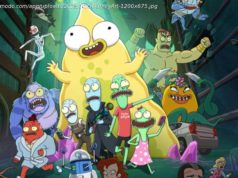Some tech we’ll miss. To others, we say good riddance.
Even in a year like 2020, one thing didn’t change in the tech world: Certain devices, technologies, and services shut down. The causes vary, as does the level of regret. Some things we’ll miss; some things we never cared about; and others, we’re glad to show the door. This year, we’re dividing the departed by how much we think most people will actually care. Check out our list below and wave goodbye or good riddance to: Nearly a decade ago cloud-based music lockers were the big craze from companies like Amazon, Apple, and Google. But when the dust settles there can be only one (or two, or three). Google decided that 2020 was as good a time as any to stop duplicating its music efforts (since it’s so busy churning out new messaging apps), and made December 2020 the final death date for Google Play Music. It was a months-long demise for the service as Google encouraged its users to transfer to the new hotness: YouTube Music. In August, Google blocked new uploads and downloads through its Music Manager app, and the music store was closed. In September, streaming music from the cloud started shutting down around the globe, and by the end of December all personal music collections were deleted. The service replacing it, YouTube Music, is free to use and offers a premium membership to get ad-free music and to download music for offline listening. After 9.5 years and 76 million unit sales, Nintendo finally said goodbye to Nintendo 3DS in 2020. The 3DS handheld gaming device was a revelation when it first came out in 2011, because it provided a glasses-free 3D experience back when the world lost its mind and thought 3D was awesome. We reviewed the 3DS back then, and said it “may be less a gaming handheld than a totable multimedia center, only one of whose activities happens to be gaming.” The 3DS was for games, of course, but it also let you connect with friends, take pictures, stream videos from a variety of services, record audio, browse the web, and more. It was a device that continued to hold the fascination of millions for nearly a decade, but its time finally came in September when Nintendo said it would no longer manufacture the 3DS family of systems, as reported by the BBC. The writing was on the wall in June, 2015, once Microsoft acquired the company behind Wunderlist, the popular to-do list app. Wunderlist has been up for deactivation since 2017 as part of Microsoft’s plans with its own To Do app. It took a while to check this item off the list, but the company finally stopped supporting Wunderlist in May. Farewell, DSL. America’s largest Internet service provider is giving up on telephone lines for broadband connections. When digital subscriber line (DSL) first came out it was a revelation. Instead of dreadfully slow dial-up connections, we could use telephone lines to get always-on, high-speed broadband Internet. It wasn’t long, however, until we had even faster cable connections. Now the new goal is to get blazing-fast fiber connections. DSL has been sitting on the chopping block for a while now, but it wasn’t until 2020 that AT&T took action. In October, the company said it would stop selling new DSL connections. “We’re beginning to phase out outdated services like DSL and new orders for the service will no longer be supported after October 1,” the company said. Existing subscribers can still use their DSL, but new users won’t be able to get the service.






